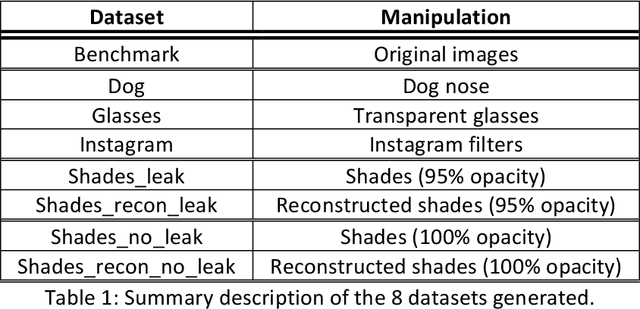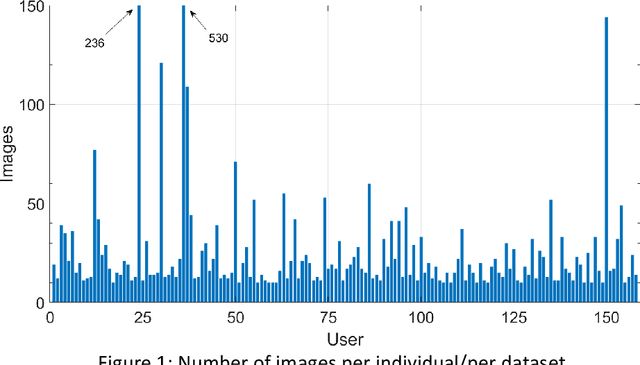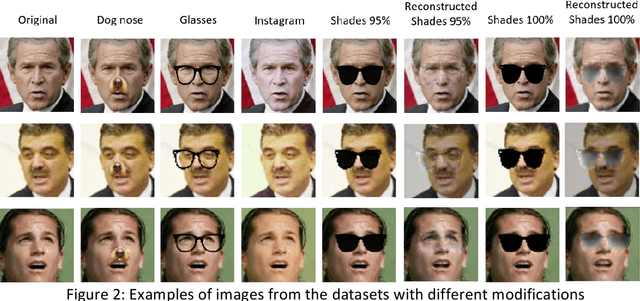LFW-Beautified: A Dataset of Face Images with Beautification and Augmented Reality Filters
Paper and Code
Mar 11, 2022



Selfie images enjoy huge popularity in social media. The same platforms centered around sharing this type of images offer filters to beautify them or incorporate augmented reality effects. Studies suggests that filtered images attract more views and engagement. Selfie images are also in increasing use in security applications due to mobiles becoming data hubs for many transactions. Also, video conference applications, boomed during the pandemic, include such filters. Such filters may destroy biometric features that would allow person recognition or even detection of the face itself, even if such commodity applications are not necessarily used to compromise facial systems. This could also affect subsequent investigations like crimes in social media, where automatic analysis is usually necessary given the amount of information posted in social sites or stored in devices or cloud repositories. To help in counteracting such issues, we contribute with a database of facial images that includes several manipulations. It includes image enhancement filters (which mostly modify contrast and lightning) and augmented reality filters that incorporate items like animal noses or glasses. Additionally, images with sunglasses are processed with a reconstruction network trained to learn to reverse such modifications. This is because obfuscating the eye region has been observed in the literature to have the highest impact on the accuracy of face detection or recognition. We start from the popular Labeled Faces in the Wild (LFW) database, to which we apply different modifications, generating 8 datasets. Each dataset contains 4,324 images of size 64 x 64, with a total of 34,592 images. The use of a public and widely employed face dataset allows for replication and comparison. The created database is available at https://github.com/HalmstadUniversityBiometrics/LFW-Beautified
 Add to Chrome
Add to Chrome Add to Firefox
Add to Firefox Add to Edge
Add to Edge